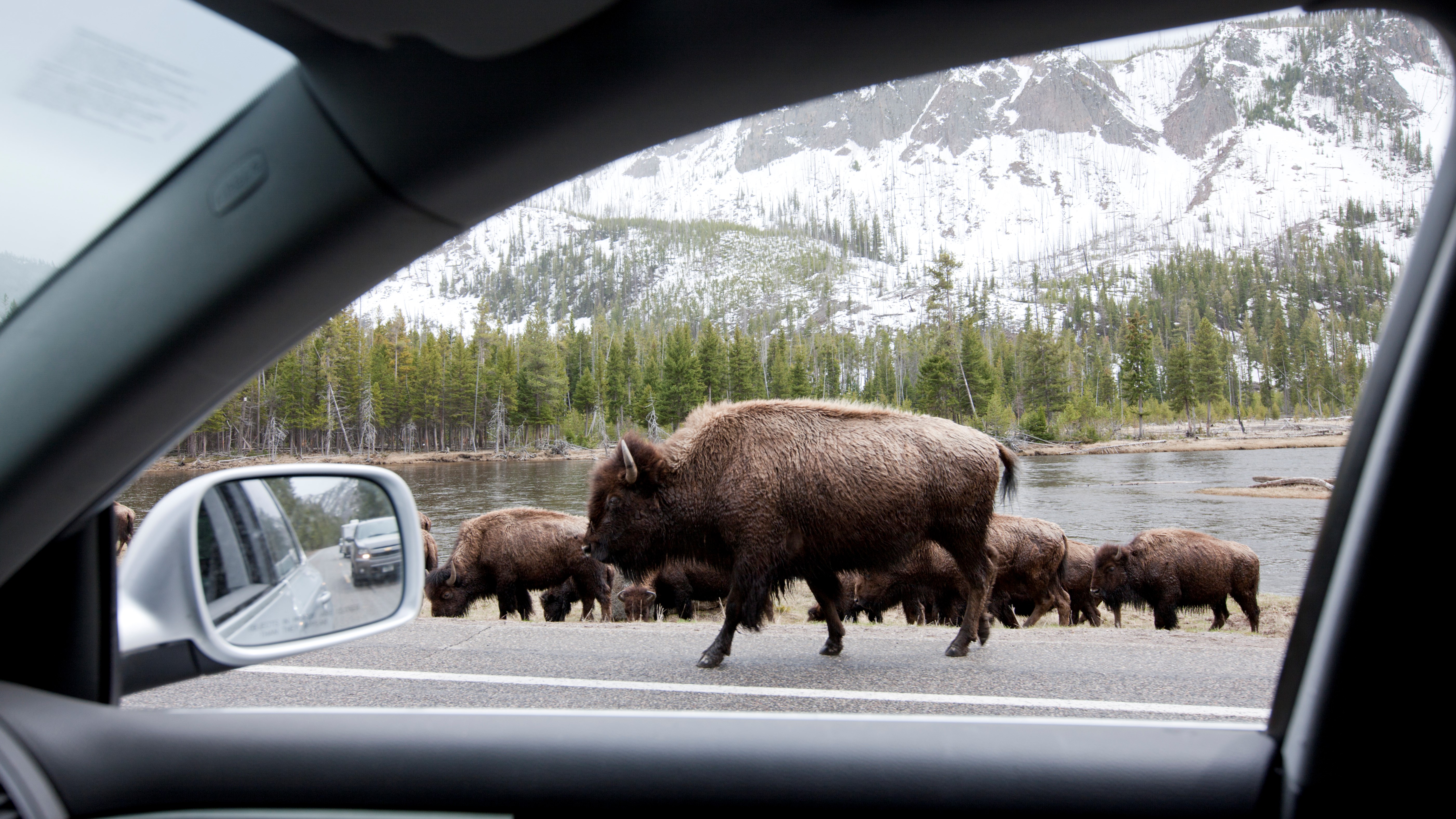
Whether you’re cruising around Yellowstone National Park on spring break or just driving across Colorado on I-70, you need to stay wildlife aware. During my years living in the Rocky Mountains, I constantly kept my eyes peeled for animals like moose and bighorn sheep, which are just a few of the amazing species you can see in mountain areas. Over the years, I saw a lot of elk, a few mountain goats and even one or two black bears from my car, and while these moments provided a thrill, they also served as a constant reminder that danger was never too far away.
According to the Colorado Department of Transportation, the US insurance industry pays out nearly $1.1 billion each year in claims for wildlife-vehicle collisions, and while big mammals can make a serious dent in your car, the impact of traffic on wildlife is far more grave, and may even be driving some species towards extinction.
We’ve written lots of guides on staying safe around wildlife when you’re on the trail, but when you’re in the car, there’s still plenty of opportunity for wildlife encounters. In the mountains, roads often cross valley floors which serve as important travel corridors for wildlife, and of course, wildlife doesn't instinctively know what to do when it sees your car coming. The following tips are meant to help keep you, your passengers and wildlife safe whenever you’re traveling through wildlife country.
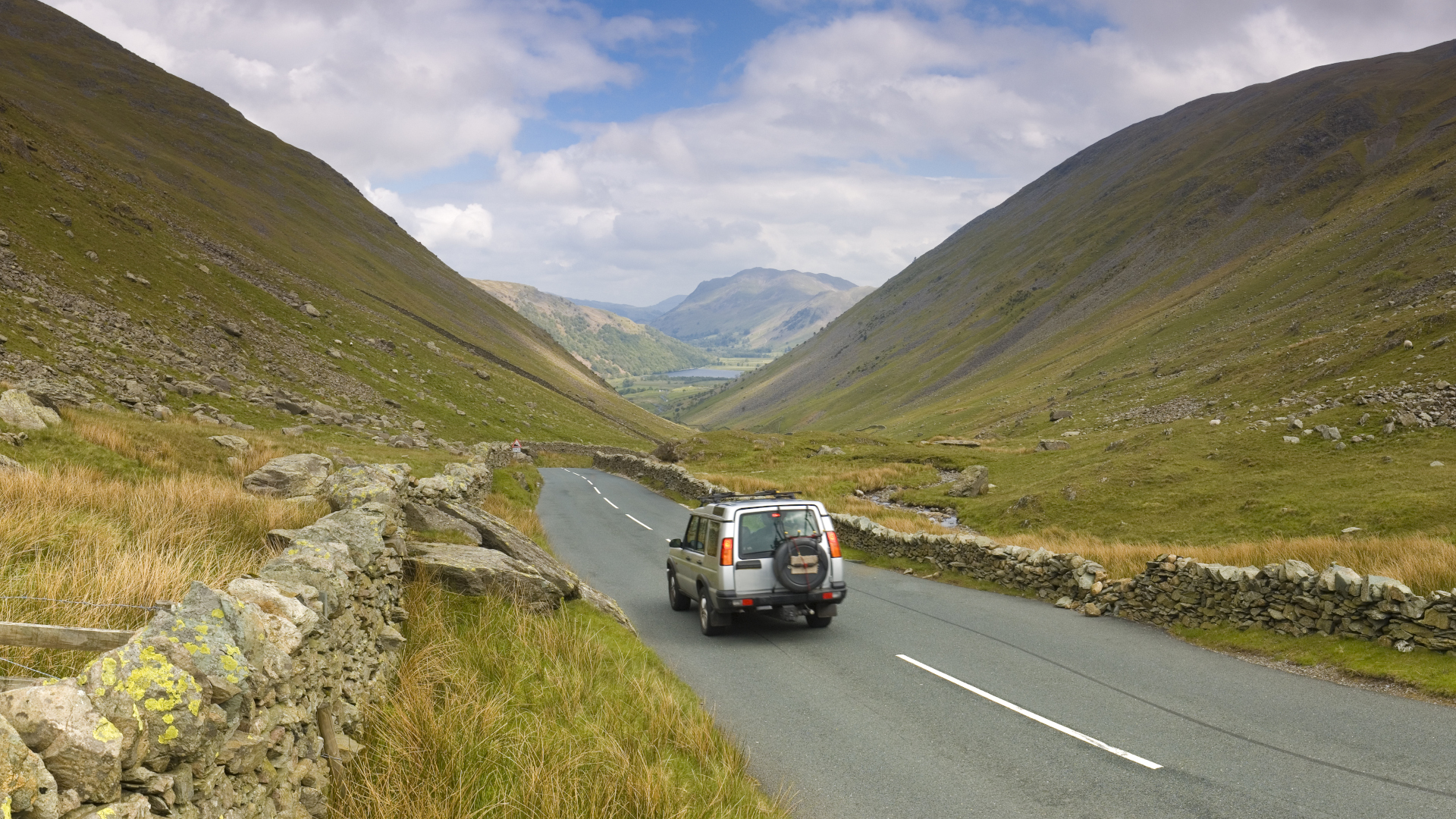
1. Stay up to date with car maintenance
Before you even hit the road, make sure your windshield is clean, your wiper fluid reservoir is full, and your headlights are working properly so you won’t have any visibility issues when you hit wildlife country.
2. Learn about wildlife
Whether you’re visiting Yosemite for the week or moving to an area high in wildlife, one of the best things you can do is to learn about the local wildlife. Find out what wildlife live in the area and learn a bit about their natural habitat so you know if you’re driving by an area where there might be a herd. Learn their seasonal migration patterns, mating seasons and even hunting seasons, all of which could cause wildlife to be on the move.
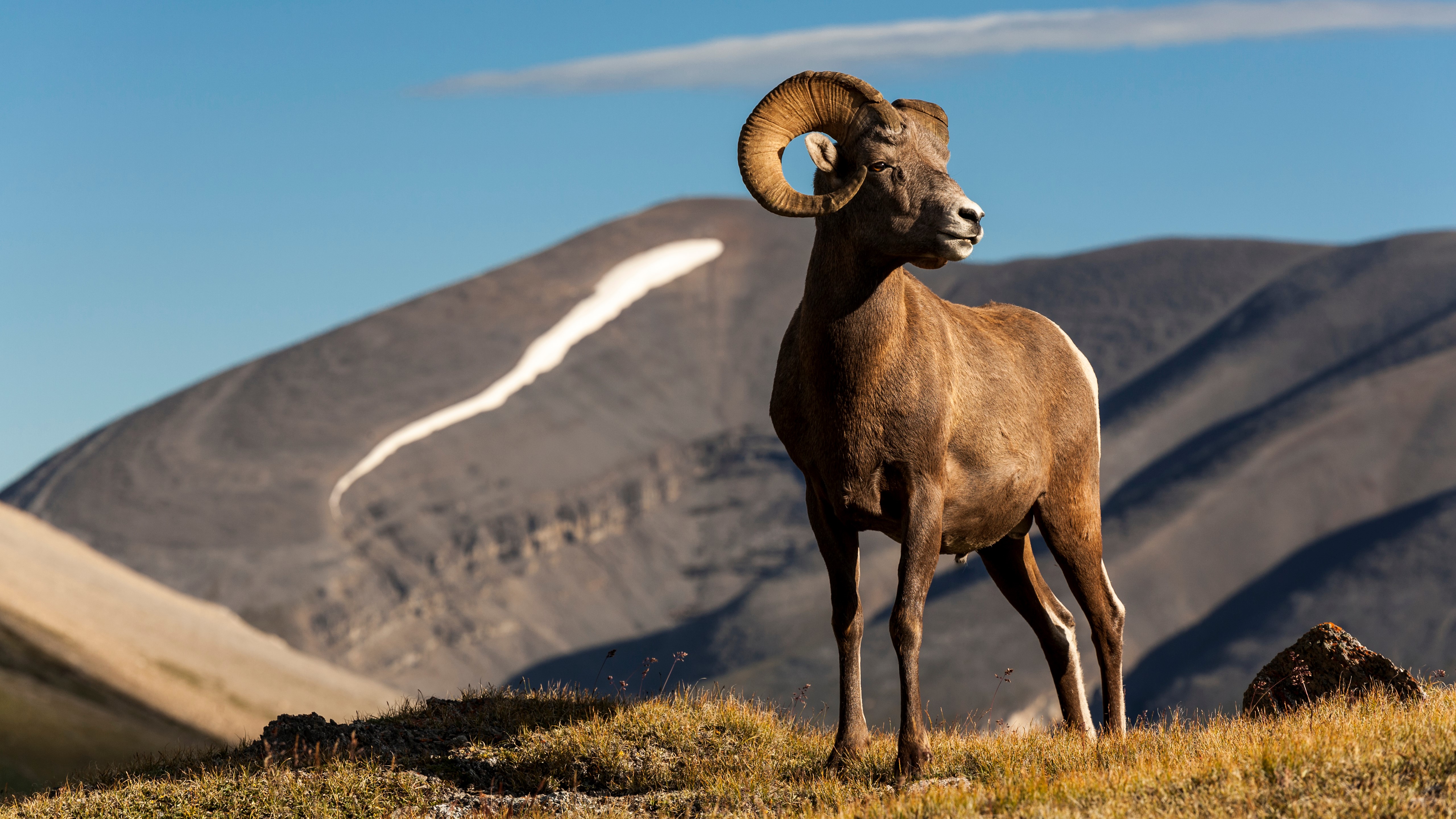
3. Stay alert
Obviously, this rule of the road applies every time you get behind the wheel of a car, but in places where bison and bears could scamper out in front of you without a moment’s warning, you must keep your wits about you.
Don’t drive when you’re tired and don’t drive distracted – that means no texting or talking while driving and keeping your radio at a reasonable volume. As you drive, keep your eyes peeled for signs warning of wildlife, as these are placed in areas where wildlife is known to travel. Scan the road from side to side and be prepared to slow down if you see an animal like a deer at the edge of the roadside.
4. Slow down
When you're driving through an area where there is likely to be wildlife crossing or near the road, it’s a good idea to take your foot off the gas pedal a little. You don’t necessarily have to go 50 in a 70, but slowing down allows you to stop more easily if a deer does decide to step out. Meanwhile, leaving a bit more room behind your vehicle and the one in front of you means that if the driver ahead brakes suddenly, you’re in a better position to avoid a collision. Essentially, drive like you would on a rainy day.
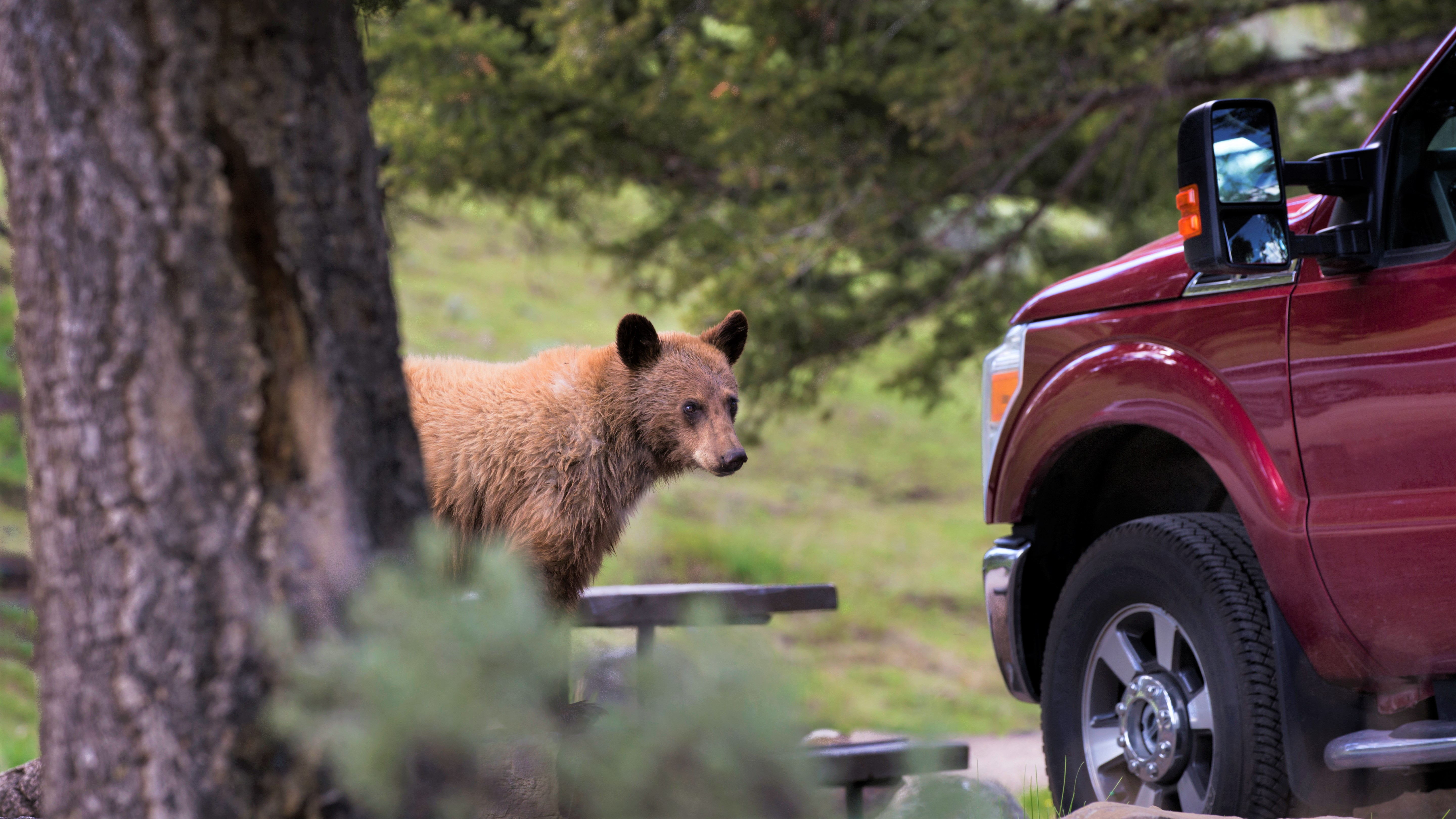
5. Limit driving during active hours
If possible, avoid driving during those times of day when wildlife is most active, meaning at dawn and dusk, especially when you don’t know the area well. Not only are many animals moving around more at these times, but visibility is poorer and it can be really difficult to see animals on the road, even in fine weather. Enhance visibility by using your high beams and turning down dashboard lights, and be on the lookout for your headlight beams picking up the reflective eyes of wildlife near the road.
What to do if you see wildlife on the road
The most important thing to remember if you see an animal on (or near) the road is that where there is one, there are likely to be others. Slow down and try not to lock up your brakes, change lanes or swerve, which can cause an accident. Allow the animal to move before proceeding.
If you find that the road is blocked by a herd of bison or other animals, do not try to drive through the herd, flash your lights or use your horn to encourage them to move. Wait until the road is clear then proceed slowly and cautiously. Remember that your vehicle can be a great place from which to view wildlife safely, so if you’re lucky enough to spot a grizzly bear or a herd of bison and you can come to a complete stop, stay in your car, grab your binoculars and enjoy them from afar.
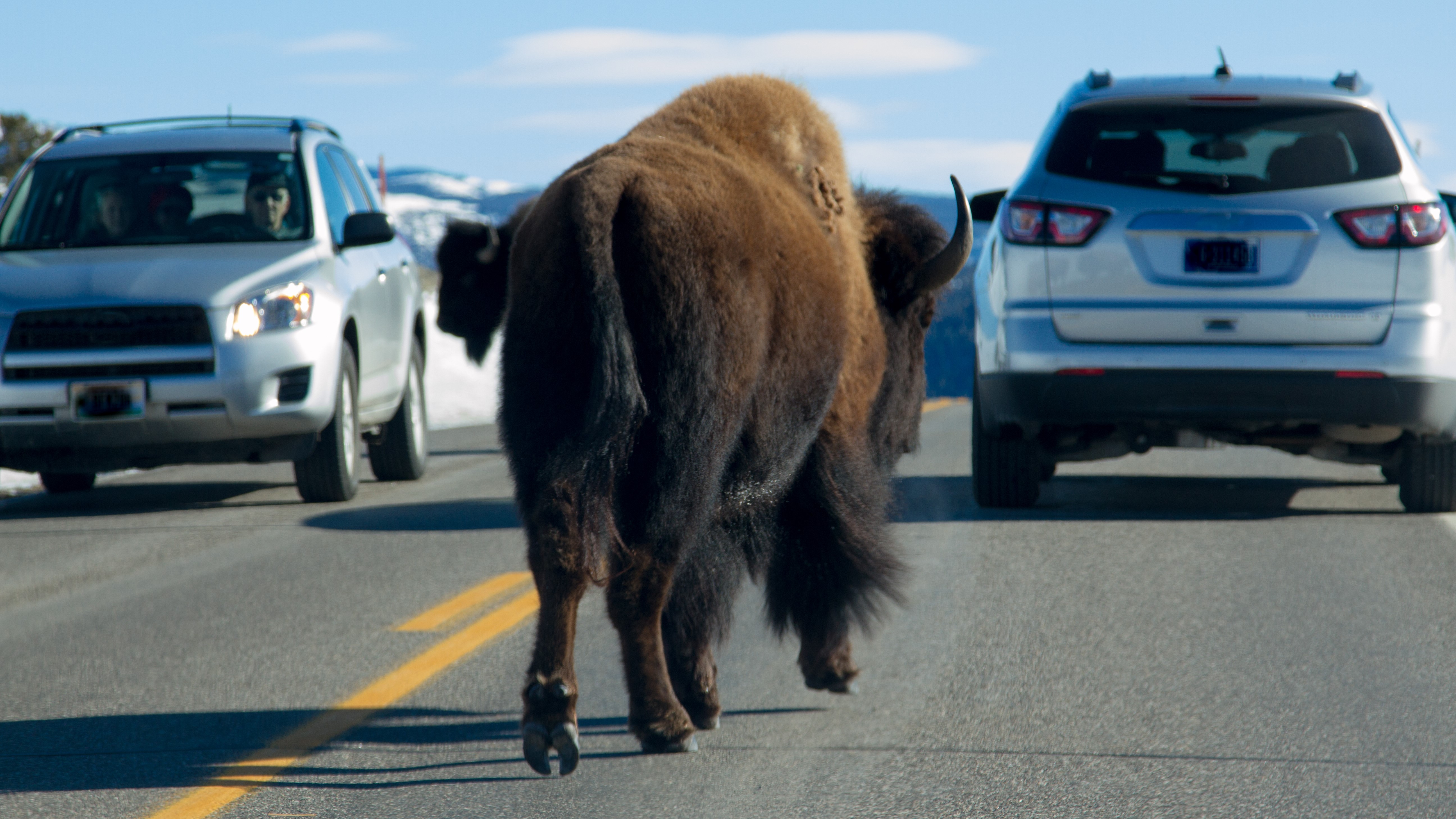
What to do if you hit an animal while driving
If the worst happens and you hit an animal large enough to cause damage to your vehicle and affect other road users, pull over like you would following any accident and put up flares if you have them. The group Defenders of Wildlife advises that you do not try to approach the wounded animal as it could attack you in its vulnerable state.
You should report the incident to state wildlife and transportation agencies so that they can arrange to treat or remove the animal and collect data on incidents in the area.







